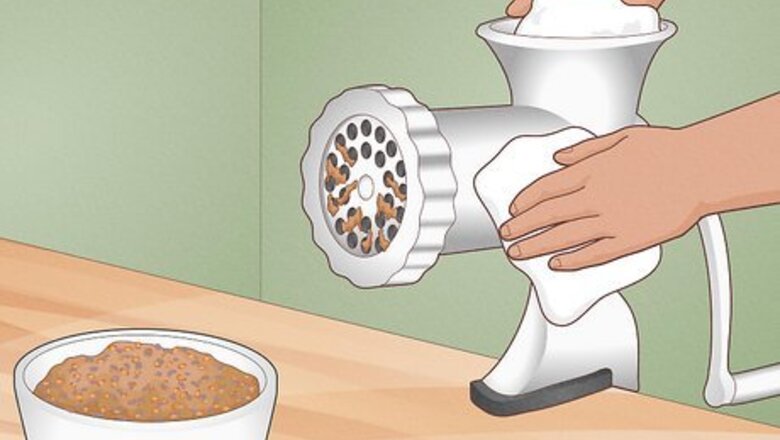
views
Hand-Washing Your Grinder
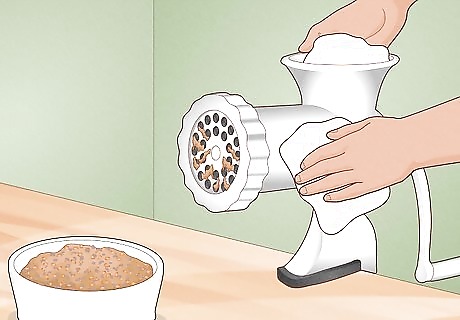
Start cleaning immediately after use. Expect meat to leave oil and grease behind as it passes through your grinder (as well as stray bits of meat). These will dry and crust over if given time, so don’t wait too long before cleaning up. Make life easier by dealing with it promptly after each use.
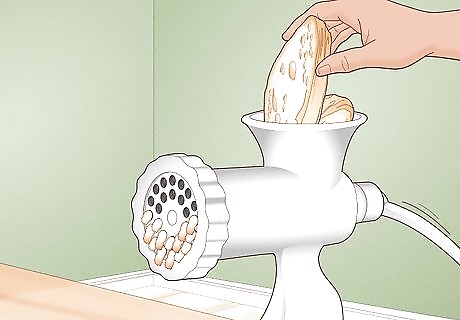
Feed bread into the grinder. Before you disassemble the machine, grab two or three slices of bread. Feed them through the grinder just as you did with your meat. Use these to absorb the meat’s oil and grease, as well as push out any stray bits that are lingering inside the machine.
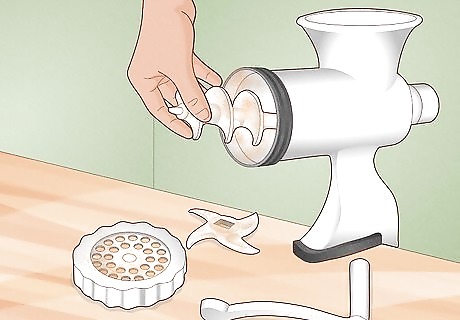
Disassemble the grinder. First, unplug the machine if it’s electric. Then break it down into its parts. These may vary according to type and model, but generally a meat grinder consists of: A pusher, feed tube, and hopper (usually a single piece through which the meat is fed into the machine). A screw (an internal piece that forces the meat through the machine) A blade A plate or die (the metal piece with holes where the meat comes out) A cover for the blade and plate

Soak the parts. Fill a sink or bucket with warm water and add some dish detergent. Place the disassembled parts inside once full. Let them sit for about a quarter of an hour to loosen up any remaining grease, oil, or meat. If your grinder is an electric model, do not soak any motorized parts. Instead, use this time to wipe down the outside of the base with a damp cloth and then a fresh one to dry it.
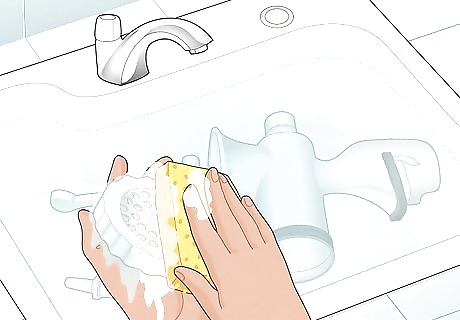
Scrub the parts. Use a sponge to clean the screw, cover, and blade. Be careful when handling the blade, since this is sharp and can easily cut you if mishandled. Switch to a bottle brush to clean the inside of the feed tube, hopper, and the plate’s holes. Rinse each part with clean water when finished. Don’t rush through this process. You want to remove all traces so you don’t end up with a breeding ground for germs and bacteria. So once you think you’ve scrubbed something enough, scrub it just a little bit more.
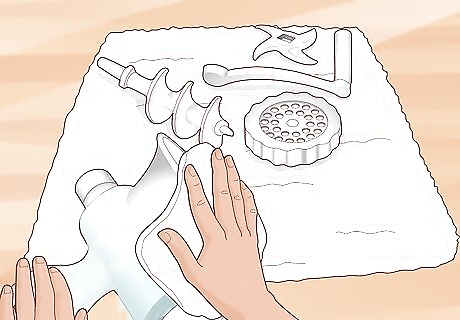
Dry the parts. First, wipe them down with a dry towel to get rid of excess water. Then lay them on a fresh towel or wire rack to air-dry. Avoid rust and oxidation by waiting until they are totally dry before putting your grinder away.
Storing Your Grinder
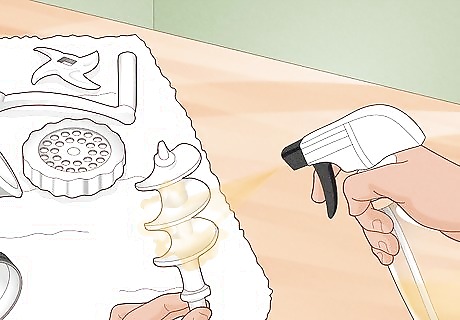
Oil any metal parts. Keep your grinder well lubricated and prevent rust from forming during storage. Fill a spray bottle with food-grade mineral oil. Then mist all of your grinder’s metal parts (excluding an electric parts) with an even coat of oil. Pay particular attention to the pusher and screw, since these come into the most contact with your meat as you feed it through the machine.
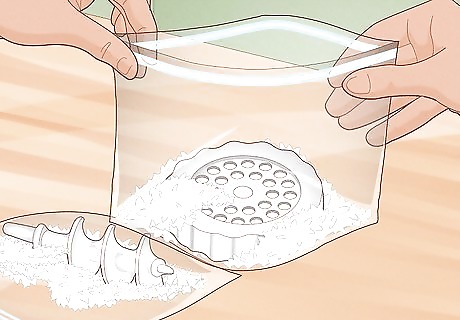
Bag each part individually with rice. Place each part to your grinder in its own sealable plastic bag. Then add a handful of rice to each bag. The rice isn’t strictly necessary, but it will absorb any present and future moisture, which makes it a good idea if you store your parts in the freezer and/or live in an area with high humidity.

Store in your freezer if possible. Keep in mind that your grinder works best when its parts are cold. Keep any non-electric parts in the freezer if there’s space. However, if you can’t devote that much space for long-term storage, don’t worry. Instead: Store your parts somewhere dry in the meantime. Then simply place them in the freezer long enough to chill them before your next use (roughly an hour).
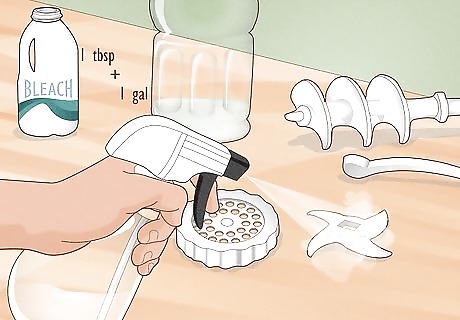
Sterilize oiled parts with bleach before use. Mix a tablespoon of bleach with one gallon (3.8 L) of water. Fill a spray bottle with this solution. Then spray each metal part that you oiled before storage to ensure that they are disinfected. Then thoroughly rinse them with clean water to remove all traces of bleach.
Ensuring an Easy Clean-Up
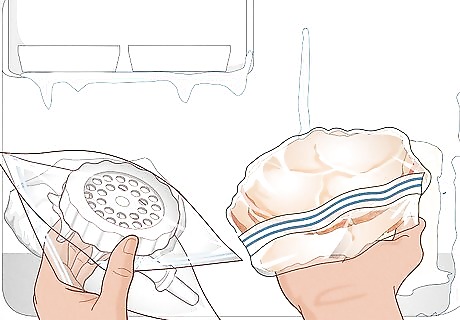
Keep parts and meat cold. Expect warm meat to make a bigger mess when you’re grinding it. Make clean-up easier by keeping both the meat and the grinder’s parts well chilled before use. If you need to grind the same meat multiple times: Fill a large bowl with ice. Place a second bowl inside the first and grind your meat into that. Repeat as needed to keep the meat relatively chilled between each grind.
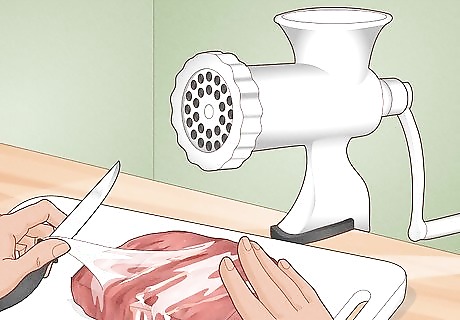
Slice off sinew before grinding. Expect any sinew in your meat to dull your grinder’s blade over time. Carefully cut this away with a knife or cleaver before feeding the meat into your grinder. Ensure a better grind (and thus less mess to clean up inside).

Sharpen or replace blades as needed. Remember: a dull blade will create a bigger mess inside. If your machine seems to be consistently smearing meat around instead of grinding it into small pieces, sharpen the blade or replace it with a new one. However: As long you keep your grinder well maintained and avoid feeding sinew into it, the blade should get sharper and sharper the more you use it. At most, you should only need to sharpen or replace it annually, if that.


















Comments
0 comment